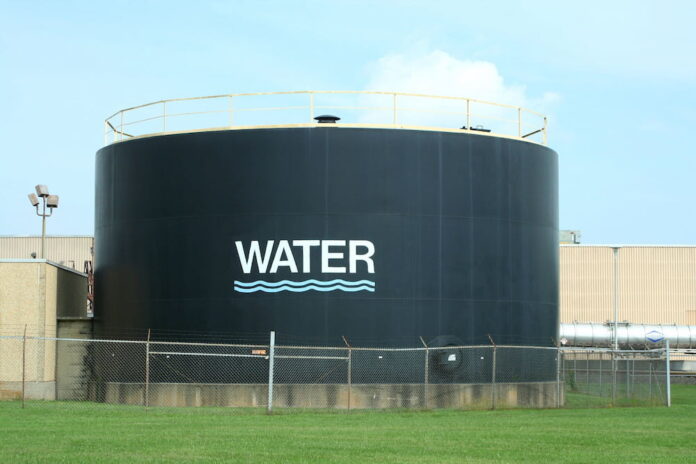In the operations of healthcare institutions, an often overlooked yet critical component is water. Serving multiple roles, from hygiene to patient care, it’s a resource that must maintain its balance. With an escalating need to have uninterrupted supply, water storage solutions have become integral to healthcare facility management.
This article explores the multifaceted benefits of water storage systems in healthcare settings. Read on to discover how they can significantly impact healthcare services, patient care, and overall facility efficiency.
1- Improved Emergency Preparedness
Water is as important as any other medical supply in a healthcare facility when disaster strikes. It’s necessary for sterilizing and purification equipment, maintaining hygiene, and even directly in patient care. Without a doubt, a constant water supply is crucial in emergencies and disaster response.
That’s where water storage solutions, like tanks from a water tank factory, come into play. They’re designed to safely hold large volumes of water, safeguarding against shortages during emergencies. With them, you’re prepared to continue delivering high-quality healthcare services, even if there’s a disruption in your regular water provision.
Consider the case of hospitals faced with natural disasters like hurricanes or earthquakes. They’ve often had to function without utilities for several days. Storage systems have proven invaluable in these situations, as critical services don’t stop due to lack of water.
2- Increased Reliability and Assurance
Water storage solutions are like a security blanket for healthcare facilities. They provide a constant supply, even when the primary source experiences disruptions. That’s because they’re designed to store enough water to meet the facility’s needs for a defined period.
Water storage solutions provide uninterrupted water supply and bolster trust among patients, staff, and stakeholders. This confidence arises from the facility’s preparedness to manage disruptions effectively and maintain the quality of care. Therefore, these solutions contribute significantly to a resilient healthcare system that upholds consistent services, regardless of circumstances.
3- Cost Effectiveness
Water disruptions in medical facilities aren’t merely inconveniences; they’re expensive setbacks. Unplanned interruptions can halt surgeries, impede sterilization processes, and compromise patient care, contributing to spiraling costs. Furthermore, issues related to poor water quality, such as disease outbreaks, can lead to additional expenses and potential lawsuits.
Investing in water storage solutions is cost-effective scenario in the long run. These solutions protect your facility from the financial impact of disruptions, enhancing smooth operations even during crises. They also give you control over water quality, helping you avoid unnecessary healthcare costs. For forward-thinking healthcare institutions, this makes it a financially sound decision.
4- Better Control Over Water Quality
In any healthcare facility, the importance of water quality can’t be overstated. It’s integral to maintaining hygiene, preventing infections, and the safe operation of various medical devices. Compromising water quality could lead to many issues, including patient health risks and potential operational setbacks.
However, water storage solutions are designed to mitigate such risks. They’re designed not just to store but also to safeguard water quality, preventing the growth of harmful microorganisms and the risk of contamination. By integrating such systems, healthcare centers can assert more control over their water quality, helping to uphold high standards of care and safety.
5- Sustainability And Environmental Impact
Water storage solutions serve as one of the tools aiding healthcare facilities to reach their green goals. They’re instrumental in reducing the environmental impact associated with continuous water sourcing.
Recycling water through these solutions is a critical strategy in water conservation. They’re designed to collect, store, and treat water for various non-potable uses like irrigation, cooling, and flushing. This reduces the demand for freshwater sources and mitigates the impact on local ecosystems.
But it’s not just about conservation. These solutions also reduce the energy consumed in the water supply, lessening the carbon footprint. They’re a win-win for medical centers, addressing their operational needs and environmental responsibilities.
6- Independence From Local Supply
Healthcare facilities can’t afford to rely only on local water supplies. These supplies may become compromised or unreliable during local disasters or maintenance. Thus, having independent storage solutions is vital.
Water storage systems give these centers the autonomy they need. They’re in control of their water reserves, ensuring that critical operations don’t come to a standstill. It’s a step toward self-reliance that makes a world of difference.
In essence, it’s about security and peace of mind. With a proper water storage solution, there’s assurance that the facility can operate seamlessly, regardless of what’s happening with the local supply. That’s the kind of independence these facilities need.
Conclusion
Water storage solutions provide critical benefits to healthcare facilities, facilitating uninterrupted supply and better disaster preparedness while enhancing water quality control. These systems foster operational efficiency and facilitate considerable cost savings.
With the added benefit of supporting sustainability goals, these solutions underline their wide-ranging advantages. Therefore, medical centers should prioritize integrating robust solutions for enhanced patient care, operational efficiency, and sustainability.
Read Also
- Essential Steps to Launch Your Own Optometry PracticeLaunching your own optometry practice can be a thrilling and fulfilling journey. However, it requires careful planning, dedication, and an understanding of what it takes to succeed. With the growth in demand for eye care, more and more individuals are seeking to start their own practices. But how do you get there? This guide walks… Read more: Essential Steps to Launch Your Own Optometry Practice
- Compounding Pharmacy: Personalized Medication SolutionsA compounding pharmacy plays a vital role in modern healthcare by providing customized medications tailored to the specific needs of individual patients. Unlike mass-produced drugs manufactured by pharmaceutical companies, compounded medications are prepared by licensed pharmacists who carefully combine, adjust, or modify ingredients to create a formulation that best suits a patient’s unique medical requirements.… Read more: Compounding Pharmacy: Personalized Medication Solutions
- The Best Business Decision a Surgeon Ever Made: Ordering a Medical Equipment AppraisalMost surgeons don’t go into medicine because they love spreadsheets, valuations, or negotiating buy-ins. They go into medicine because they want to operate, treat patients, and build something meaningful over time. For one surgeon, that mindset worked perfectly, until the day another surgeon decided to buy into his practice. That moment exposed a problem he… Read more: The Best Business Decision a Surgeon Ever Made: Ordering a Medical Equipment Appraisal
- Creative Approaches to Alleviating Healthcare Staff ShortagesHospitals and clinics are facing staff shortages, which makes it harder to take care of patients well. Finding simple and useful solutions is very important. Easy changes like flexible work hours, good training, and chances to grow can help staff stay happy. Technology, like online doctor visits and helpful tools, can make work easier. Smart… Read more: Creative Approaches to Alleviating Healthcare Staff Shortages
- Understanding the Role of Sterilizers in Healthcare FacilitiesHave you ever wondered how hospitals keep their equipment safe enough to use on dozens of patients every day? Most people never think about what happens behind the scenes, yet these hidden steps play a huge role in patient safety. Sterilizers are part of that system, working quietly to remove harmful germs before any instrument… Read more: Understanding the Role of Sterilizers in Healthcare Facilities
- Building Healthcare Access Where It’s Needed Most: A Local First ApproachHealthcare shouldn’t depend on where you live. But in the U.S., it often does. If you’re in a big city, you likely have options. If you’re in a small town or an underserved neighbourhood, it’s a different story. To fix this, more healthcare leaders are turning to a local-first approach. That means putting clinics and… Read more: Building Healthcare Access Where It’s Needed Most: A Local First Approach







